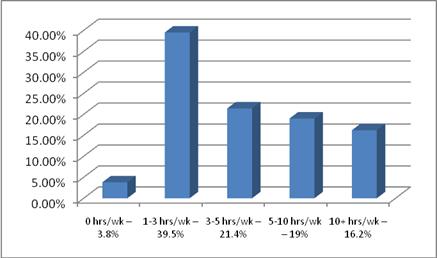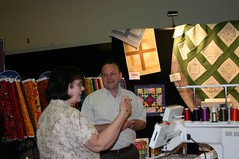Blog

Watch the Latest MerchantCircle Ad from San Francisco
Dr. Nancy Lam from Embarcadero Dentistry stars in MerchantCircle’s SF area ads.
Thursday, February 28, 2008
Forrester analyst Charlene Li calls MerchantCircle a "favorite"
You can hear the fascinating panel discussion (note: MerchantCircle is discussed at 01:01:15 ) here.
Thursday, February 21, 2008
Time For Yellow Pages to Flip the Script?
While I think it's premature to say that the print industry is dead, the long-term outlook for yellow pages in their current state looks ominous. From a consumer perspective a recent Nielsen/NetRatings survey tells us that 78% of respondents said they used the internet more today than 2 years ago, as opposed to 2% who used it less. With print directories, only 6% used it more, as opposed to 52% who said they used it less.
From the local merchant perspective, we hear a broad range of opinions about the effectiveness of yellow pages versus local newspaper versus internet advertising. In a recent survey* of our 375,000+ local merchant network, we asked merchants for their thoughts on the effectiveness of various customer-acquisition channels, marketing budget allocation and willingness to invest in advertising (in terms of both time and dollars).
Survey Results and Analysis
Effectiveness of Yellow Pages
24% of respondents rated yellow pages "not effective at all" or "mostly ineffective". When reached for comment, Dino Folino, owner of TDF Limousine Service in Oakmont, PA said:
"I, myself, don't use the Yellow Book. I go to the computer to search and that's
why I stopped wasting my money on print advertising."
His comment was representative of several conversations we've had with merchants. Interesting to note that in this case, the merchant's experience as a consumer drove his decision to quit spending on print advertising. If, in fact, merchant behavior as a consumer does influence advertising decisions, a 52% drop in consumer yellow page usage over two years (see Nielsen/NetRatings survey results above) doesn't bode well for the industry.
42% of survey respondents rated yellow pages as "effective" or "very effective" and 19% rated yellow pages "neither effective nor ineffective" ( 14% had no opinion or no experience with yellow pages).
Budget Allocation
Those who rated yellow pages as "not effective at all" or "mostly ineffective" allocated only 9% of their budget to yellow pages and a whopping 45% of their budget to internet advertising. Not surprising considering that 75% of this group rated internet advertising "effective" or "very effective".
What was somewhat surprising was the response from 42% of merchants who believe YP is effective. Of those merchants, 75% rated internet advertising as "effective" or "very effective". They allocate an average of 37% of their marketing budget to yellow pages and 30% to internet advertising (the remaining budget goes to newspapers, radio, TV and "other").
Figure 1: Budget Allocation
So even the most satisfied Yellow Pages customers allocate 30% of their budget to online. What happens if YP usage continues to decline? As online opportunities become more efficient and accessible, how will yellow pages salespeople convince merchants to spend more on print? Should the YP salesperson even lead their pitch with print? Since both YP advocates and naysayers believe internet advertising is effective, it may be time "flip the script" and begin their sales pitch with online (would you like a yellow page ad with that?).
Willingness to Invest
Here we observed consistency among respondents. While, in general, survey respondents under-report their willingness to spend dollars, the local businesses we interviewed didn't foresee spending big bucks on internet advertising even if it was guaranteed to work! Here's what we learned:
* Of merchants who rated the yellow pages effective, 73% would not spend more than $100/month on internet advertising
* Of merchants who rated YP ineffective, 60% would not spend more than $100/month on internet advertising
If the vast majority of local businesses are unwilling to spend more than $100 per month on internet advertising, is it ever profitable to insert a salesperson into the mix? Can we expect broad-scale adoption of internet advertising when price points for many solutions begin at $250 per month? Many traditional business models (and some current players in the local online space) have such a high cost structure that they can't offer products in the "sweet spot" our merchants desire.
In terms of time merchants were willing to spend, we again see consistency between the "YP effectives" and the "YP ineffectives":
Even if it was guaranteed to work, 43% of merchants were willing to spend only between 0-3 hours per week marketing their business online. 40% said they would be willing to spend between 3-10 hours and 16% would spend more than 10 hours per week.
Figure 2: Time Willing to Invest if Internet Marketing Guaranteed to Work
Running online marketing campaigns requires ramp up time that many of our merchants just can't spare. If a local merchant spends 10+ hours per day running their business, is it really reasonable to expect them to become proficient at SEM, blogging or email marketing? While a subset of local business owners is interested in getting educated about online, the feedback I'm hearing indicates that a turnkey approach is more appropriate.
Rumors of YP's Demise Have Been Greatly Exaggerated...for Now
While print directories face difficult financial times and reduced usage, a large percentage of our user base still believes yellow pages effectively drive customers to their business. And while consumer usage is on the decline, YPs still have the opportunity to leverage the relationships they've built with merchants to sell new, more effective solutions.
With their best customers adopting internet advertising as an important part of their marketing mix, the time is now...but what to sell and how? If our merchants had their way they would ask for:
* Internet marketing solutions with the option of print ads as an add-on
* Services that are cheap (sub-$100 per month) and effective
* Services that are simple to use, requiring fewer than three hours per week to manage
Over the next 6 months, we here at MerchantCircle are interested to see how the traditional print industry reacts to changes in the local space, especially now that those changes are severely impacting shareholder value.
Darren Waddell
Sr. Director of Marketing, MerchantCircle
* Notes: As context, our target demographic represents the "long-tail" of online advertisers: typically merchants outside of major metros in categories other than arts, entertainment and dining (these categories represent around 10% of our network members). While we surveyed our entire base (more on them in a future blog), the results presented below come from 864 of our most highly-engaged merchants - those who regularly log into their accounts regularly to write blogs, upload photos, send newsletters and create coupons.
Tuesday, February 12, 2008
Hyve Up Interview w/MerchantCircle
Thanks to Xavier and Paul from Hyve Up for coming down to Los Altos. It was fun.
Sincerely,
Kevin L.
Community Relations
Thursday, February 7, 2008
What To Do in a Recession
 In one of my recent conversations with our merchants, Chuck Bruce of Bruce's Sew Handy in Coarsegold, CA, he had one of the most eye-popping figures I've heard recently.
In one of my recent conversations with our merchants, Chuck Bruce of Bruce's Sew Handy in Coarsegold, CA, he had one of the most eye-popping figures I've heard recently.He says:
"My absolutely best coupon redeeming experience I've ever had was through MerchantCircle. I've advertised coupons in the local newspaper offering free gifts with no purchase necessary and got nothing. With one MerchantCircle coupon I had 43 coupons redeemed!"
I have to warn you first off, that that number is not common. Coupon sites have been notoriously hard pressed to gain much traction - Zixxo, Judy's Book - even well-funded and well-publicized sites like Edgeio have gone out of business. While the major reasons lay in consumer apprehension, a lot of it has to do with merchant resourcefulness.
There are a number of great lessons we can learn from Chuck. He started off by collecting email addresses of all his regular and new clients - which is very important when taking advantage of MerchantCircle's free tools. He uploaded them onto his MerchantCircle account and started sending his customers newsletters and coupon deals.
The coupon that generated 43 redemptions was a 'buy one, get one free' which he broke even on. What he did gain from the coupons was customer loyalty and a number of 'extra' added-on purchases. Since opening in April of 2004, Chuck has seen a 30% increase in business every year. So, while the analysts predict gloom, there are many proactive ways a merchant can continue to attract new customers - starting with themselves.
Sincerely,
Kevin L.
Community Relations